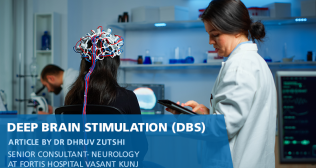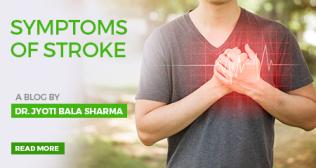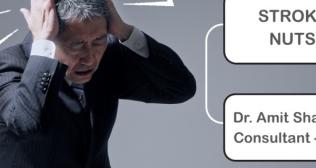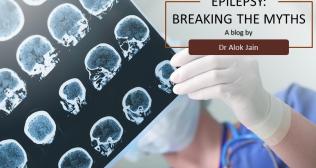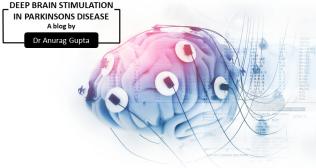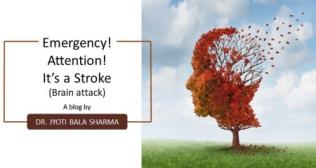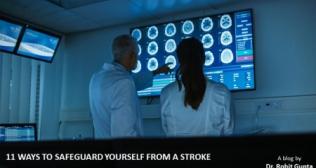
Understanding Tremors: Causes, Symptoms, and Management
Most of us have experienced a moment of shakiness; hands trembling from nerves before public speaking or legs feeling unsteady after an intense workout. These fleeting episodes are a normal physiological response. However, when shaking becomes an involuntary, persistent, and rhythmic movement, it is known as a tremor. This condition can be a source of significant frustration and anxiety, interfering with simple daily tasks like writing, drinking from a cup, or buttoning a shirt.
A persistent tremor is more than just "the shakes"; it is a neurological symptom, not a disease in itself. It is a signal that there is a disruption in the parts of the brain that control our muscles. Understanding the different types, causes, and management strategies for tremors is the first and most crucial step toward regaining control and improving quality of life.
What Are Tremors?
To properly address the question, what are tremors? A tremor is an unintentional, rhythmic muscle contraction that leads to shaking movements in one or more parts of the body. While it most commonly affects the hands, it can also occur in the arms, head, vocal cords (causing a shaky voice), torso, and legs.
The shaking can be constant or intermittent. For some, it is a minor nuisance, while for others, it can be severe enough to be disabling. It is essential to recognize that the presence of a tremor warrants a medical evaluation to determine its underlying cause.
The Common Body Tremors Causes
The reasons for tremors are rooted in the complex areas of the brain that control movement. Problems in the cerebellum, basal ganglia, or brainstem can disrupt the smooth communication between the brain and the muscles. The specific body tremors causes are numerous and can range from neurological diseases to metabolic issues and even medication side effects.
Neurological Conditions
These are among the most common causes of persistent tremors.
- Essential Tremor: This is one of the most prevalent movement disorders. It is a progressive neurological condition that causes a tremor, usually in the hands, during voluntary movements like writing or holding a cup. It often has a genetic component and can run in families.
- Parkinson's Disease: A tremor is a classic sign of Parkinson's, but it is typically a "resting tremor," meaning the shaking occurs when the muscles are at rest and often improves with movement.
- Multiple Sclerosis (MS): This autoimmune disease damages the protective sheath around nerves in the brain and spinal cord. If the damage occurs in the cerebellum, it can lead to a significant intention tremor.
- Stroke: A stroke that occurs in or damages the cerebellum or basal ganglia can result in a tremor.
- Traumatic Brain Injury (TBI): Injury to the parts of the brain that control movement can also be a cause.
Other Medical and Lifestyle Factors
- Overactive Thyroid (Hyperthyroidism): An excess of thyroid hormone can overstimulate the nervous system, leading to a fine, shaky tremor.
- Medication Side Effects: Many common medications can cause tremors, including some asthma inhalers, antidepressants, and corticosteroids.
- Caffeine and Stimulants: Excessive intake of caffeine or other stimulants can lead to a temporary physiological tremor.
- Stress, Anxiety, and Fatigue: While these do not cause an underlying tremor disorder, they can significantly worsen a pre-existing tremor.
- Alcohol Withdrawal: A tremor is a common and serious symptom of alcohol withdrawal in individuals with alcohol dependence.
Recognizing the Tremors Symptoms
The primary symptom is, of course, the shaking itself. However, a neurologist will carefully evaluate the specific characteristics of the tremor to help identify its cause. The main tremors symptoms are classified by when they appear.
Resting Tremor
This type of tremor occurs when the muscle is relaxed and supported against gravity, such as when your hands are resting in your lap. The shaking often decreases or stops when you begin to move. This is the hallmark tremor of Parkinson's disease.
Action Tremor
This broad category includes any tremor that occurs with the voluntary movement of a muscle.
- Postural Tremor: This happens when you try to hold a position against gravity, like holding your arms outstretched in front of you. Essential tremor often presents as a postural tremor.
- Intention Tremor: This tremor is characterized by a distinct worsening of the shaking as you approach a target. For example, the tremor may be minimal when you start reaching for a glass but becomes much more pronounced just before you touch it. This is a classic sign of a problem in the cerebellum.
Diagnosis and Medical Evaluation
Finding the reason for a tremor is a process of elimination. A doctor, usually a neurologist, will conduct a comprehensive evaluation.
- Physical and Neurological Exam: The doctor will observe the tremor, checking which body parts are affected, whether it occurs at rest or during action, and its amplitude. They will also assess your balance, speech, coordination, and reflexes.
- Blood and Urine Tests: These can help identify metabolic causes, such as thyroid disease or vitamin deficiencies.
- Diagnostic Imaging: An MRI or CT scan of the brain can help rule out a structural cause like a stroke or a tumor.
- DaTscan: This is a specialized imaging technique used to help confirm a diagnosis of Parkinson's disease by evaluating the dopamine system in the brain.
Body Tremors Treatment and Management
The body tremors treatment plan depends entirely on the underlying cause.
- Treating the Root Cause: If the tremor is caused by a condition like an overactive thyroid or a medication side effect, addressing that primary issue will often resolve the tremor.
- Medications: For essential tremor, medications like beta-blockers (propranolol) or anti-seizure drugs are often the first line of treatment. For Parkinson's-related tremors, medications that increase dopamine levels (like Levodopa) are used.
- Physical and Occupational Therapy: Therapy can be incredibly beneficial. A physical therapist can help improve strength, coordination, and balance. An occupational therapist can teach adaptive strategies and introduce tools, like weighted utensils or pens, to make daily tasks easier.
- Surgical Intervention: For severe, debilitating tremors that do not respond to medication, a procedure called Deep Brain Stimulation (DBS) may be an option. This involves implanting a small electrode in the brain, which sends electrical impulses to block the signals that cause the tremors.
Navigating Life with a Tremor
Living with a persistent tremor can be challenging, both physically and emotionally. A proper diagnosis is the most crucial step, as it opens the door to effective management and provides clarity about the road ahead.
It is essential to consult a doctor for any tremor that is persistent, progressive, or interferes with your daily life. With the right medical guidance, therapeutic support, and lifestyle adjustments, many people can successfully manage their symptoms, maintain their independence, and continue to lead full, active lives.
Frequently Asked Questions
1. Does having a tremor automatically mean I have Parkinson's disease?
Ans. No, absolutely not. Essential tremor is far more common than Parkinson's disease. While a tremor is a key symptom of Parkinson's, many other conditions can cause it. A thorough neurological exam is needed to differentiate them.
2. Can stress and anxiety cause a permanent tremor?
Ans. Stress and anxiety do not cause a chronic tremor disorder like essential tremor. However, they can significantly worsen a physiological tremor or an existing essential tremor, making it much more noticeable.
3. Can tremors be cured?
Ans. This depends on the cause. If a tremor is caused by a reversible factor like a medication or a metabolic issue, it can be "cured." For chronic neurological conditions like essential tremor or Parkinson's, there is no cure, but the symptoms can be effectively managed with treatment.
4. What are the first steps if I notice a new tremor?
Ans. The first step is to make an appointment with your primary care doctor. They can perform an initial evaluation and, if necessary, refer you to a neurologist who specializes in movement disorders.
5. Are there any lifestyle changes that can help my tremor?
Ans. Avoiding caffeine and other stimulants, getting enough sleep, and practicing stress-reduction techniques like meditation or yoga can be very helpful in reducing the severity of many types of tremors.







